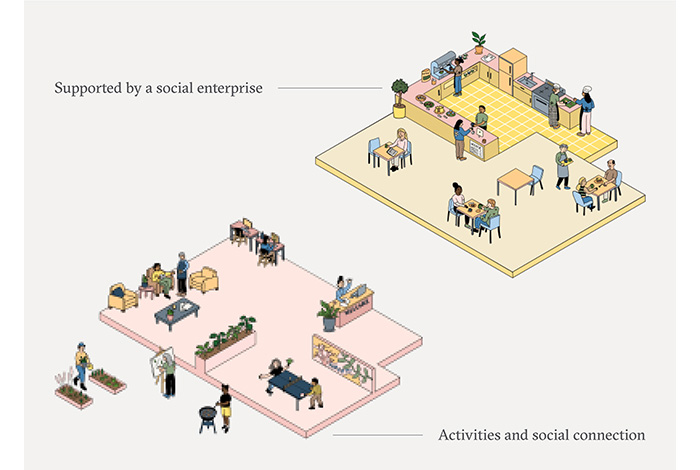Through a co-design process involving a co-design advisory made of people with lived and professional experience of incarceration and drug use, we weaved together diverse perspectives to design a model that is both ambitious and engaged with the realities of the sector.
Over several months, the advisory was guided through a detailed process to iteratively design a post-release intervention.
We used creative co-design methods like visualising techniques, collaborative storyboarding and embodied play to explore the possibilities and make decisions. Beginning with the development of a shared vision, which was a service that would help them “gain stability, connection, the ability to dream and ultimately be an integrated part of their community”, the iterative process also led us to co-create the final strategic package which offers a comprehensive North Star for the project.
This strategic package describes the service delivery framework, with all the components created by the co-design group: the vision, the offering, the experience principles and the impact it would have on individuals, society and the economy.
The advisory chose the working name ‘The Forest’. The concept of a forest resonated with the co-design group because it represents an ecosystem where everything has a place and works in harmony, and where non-linear pathways are the only way to move.
All throughout, the advisors were given decision-making power and were guided in a psychologically safe way to make their own choices. Satellite group sessions were also held to allow participation around commitments and to avoid groupthink.
The Burnet Institute was engaged throughout the design process, so there is a strong sense of ownership to continue to drive this work and confidence that The Forest is a viable service.
This project builds on a considerable body of work undertaken by the Burnet Institute in the justice health space to date.







